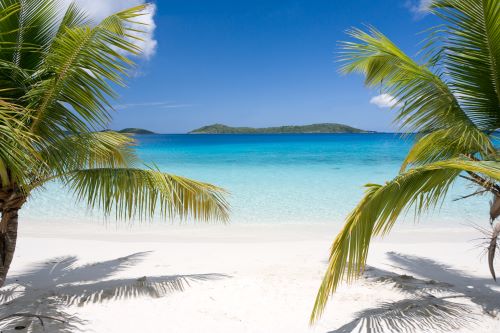Caribbean faces new era of drought as climate risks grow
ONE OF the biggest challenges of the 21st century will be solving the increasing crisis of water scarcity brought on by the climate crisis.
Nearly two-thirds of all land on Earth is on track to face water scarcity as droughts become more common. This is a challenge that the countries of the Caribbean are currently embroiled in.
Currently there is a drought over many parts of the Caribbean that has been lingering for months. Many governments in the region have warned that water scarcity could become a new norm as “flash droughts”, a term coined by Craig Ramseyer of the College of Natural Resources and Environment (in a recent research paper that highlighted the susceptibility of the Caribbean to sudden droughts) become an increasing feature of life in the region.
Over the last five years every island in the region has experienced some degree of water scarcity and data is now showing that the Caribbean is one of the most water stressed regions in the world.
The crisis at a glance
Countries such as Dominica have seen a sharp decrease in fresh water while water systems throughout Grenada have been affected by drought. Trinidad and Tobago is experiencing its worst drought in years with residents being placed under water restrictions until the end of June assuming that the water table has been replenished by then.
Similarly Jamaica and Barbados are also experiencing water shortages and over the last few years has resorted to limiting water availability to a few hours a day. St. Vincent and the Grenadines and St. Kitts and Nevis have also been forced to implement water rations.
As the climate crisis gets worse, over the years there have been changes to annual rainfall patterns which has affected the ability of aquifers to replenish. Additionally the supply of water across the region is not keeping up with increasing demand which a combination of structural factors have exacerbated from increasing urbanisation to mismanagement of water systems. 90% of water comes from groundwater supplies in Barbados while it is 84% in Jamaica.
For Barbados only 15% to 30% of its aquifers is replenished annually and it is getting worse as rainfall becomes more irregular.
Causes
Water scarcity has been steadily increasing since the 1950s but the 2013 to 2016 droughts were particularly severe putting 2 million people at risk of food insecurity.
One of the main issues that has exacerbated the Caribbean’s water scarcity is the tourist industry. In last month’s edition of the Voice newspaper, I highlighted how large foreign hotel companies drive up energy and food costs in the region.
As it stands, the tourist sector absorbs huge quantities of water often at the expense of local communities. The consumption of water by hotel resorts is much higher and often there is also a higher rate of pollution of water resources which further limits water availability.
To make matters worse, in many countries across the region water has been diverted to hotels and tourist sites first while water rationing has been implemented demonstrating the costly dependency that many countries in the Caribbean are trapped in.
However the problem isn’t just tourism, it also comes down to poor management and inadequate infrastructure.
There is extensive loss of treated water as waste which across the Caribbean amounts to 46% of average water waste due to inadequate storage. For some countries such as Jamaica the waste could be as high as 75%.
Caribbean solutions to Caribbean problems
As the climate crisis gets worse it might seem hopeless, but for the region to endure the crisis and prevent it from becoming an emergency and then a catastrophe, structural solutions will be needed to upgrade water management systems and pressure tourist companies to adapt.
In the medium term however there is a method that could be harnessed to help alleviate some of the pressure from drought. This is rainwater harvesting, a practice that has been in use across the Caribbean for at least 300 years.
Rainwater harvesting involves capturing rainwater that often runs off from roof tops to be stored for future use. Already over 500,000 people across the Caribbean partially depend on rainwater harvesting.
If governments across the region were to apply rainwater harvesting on a systemic scale particularly during the rainy season from May to December, then it could hopefully form one part of many adaptive measures that would ensure that the livelihoods and health of people could survive during the dry season and beyond.’

